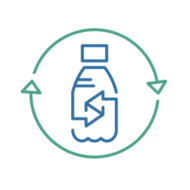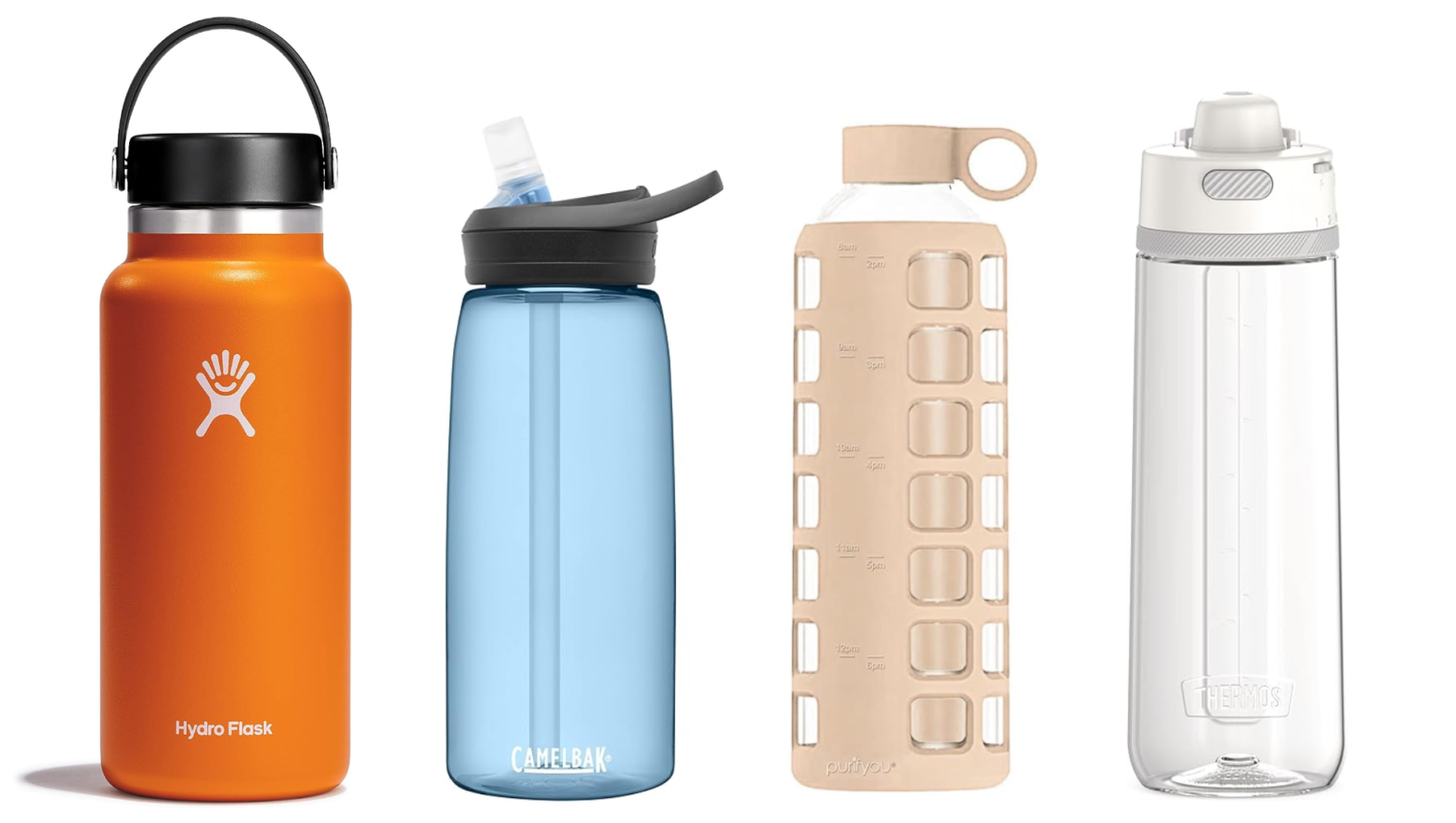Finding The Right Bottle
This guide will help you select a reusable water bottle that meets your needs and will enable you to reduce or eliminate the need for single-use plastic bottles.
Replacing Single-Use with Reusable
Single-use plastic bottles are the worst environmental offenders because they deliver so little utility for how high their environmental footprint is. The cost to create, fill, deliver, and dispose of one plastic bottle is tremendously expensive compared to the value it delivers (most people will consume 12oz of water in a couple of hours).
While reusable water bottles do come at a higher environmental cost to create on a per-bottle basis, they are much more sustainable than single-use bottles in the long run. Learn more about the breakeven point of the most common types of reusable water bottles vs single-use bottles here.
How To Select The Right Reusable Water Bottle
The number of uses is the biggest factor in how environmentally friendly a reusable water bottle can be. The more times you use it in lieu of a single-use water bottle, the more sustainable it becomes. So a good way to start deciding which bottle to buy is based on what you need it for. This will help you narrow down size and material. Then you can evaluate brands and costs.
Here are the main use cases for reusable water bottles and the best type for each:

- Daily Commuting and Office Use:
- Best Type: Plastic, Stainless Steel, Glass
- Why: Lightweight, easy to carry, and fits in car holders or bags. Doesn’t need to be high performance, just convenient.
- Gym and Sports:
- Best Type: Plastic (BPA-free), Stainless Steel
- Why: Generally a more durable material will last longer. It’s also good to consider having a bottle with a wider mouth so it’s easier to clean if you’re going to be mixing anything like hydration mixes into your water.
- School Use:
- Best Type: Plastic, Stainless Steel
- Why: Lightweight, durable, and often come in various designs.
- Outdoor Activities (Hiking, Camping):
- Best Type: Stainless Steel, or Plastic (BPA-free)
- Why: Durable, can handle rough use, and good for temperature retention. In the case of hiking or camping, plastic is light-weight.
- Travel:
- Best Type: Plastic, Stainless Steel, Collapsible
- Why: You still want a bottle that can withstand drops. If you’re going to be somewhere with reliable tap water and you don’t need to carry a full bottle to last you most of the day, than a collapsible bottle may be more convenient.
- Home Use:
- Best Type: Glass
- Why: Chemical-free, doesn’t alter taste, good for repeated use, and is at low risk of breaking around the house.
Top Water Bottles Based on Type
Jump To Section:
Plastic
Stainless Steel
Glass
Collapsible
Aluminum
Best Plastic Bottles
All of the options recommended here are affordable and great alternatives to single-use water bottles. They are ranked by durability because the longer your bottle lasts, the more single-use plastic it can displace!
#1 Nalgene – Functional, durable, and simple water bottles
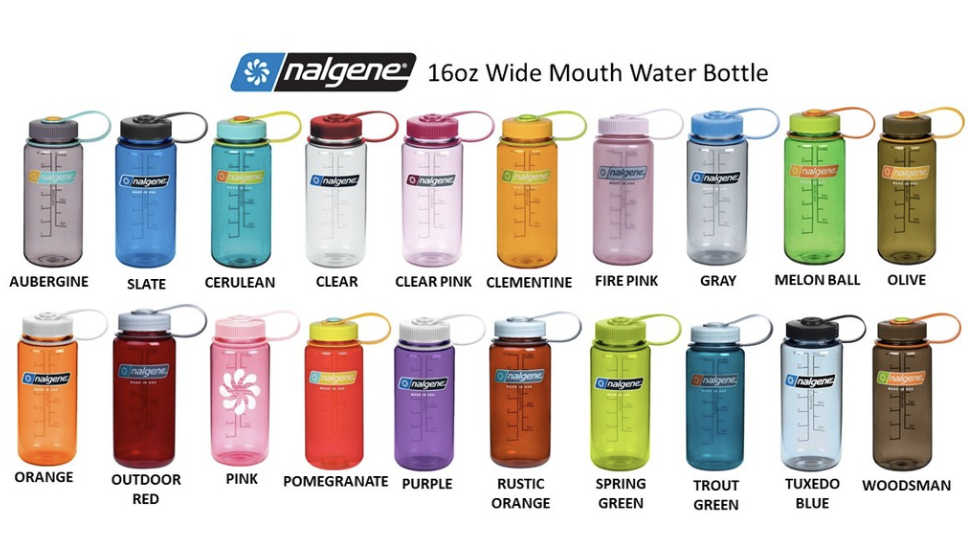
This line of water bottles is tried and true. They are extremely durable – I’ve tried to destroy one by running it over with a truck… and while it did eventually collapse I was impressed with how strong it was. They’re multi-functional, easy to clean, and the proprietary plastic used doesn’t pose health risks.
#2 Camelbak – Best option with a straw
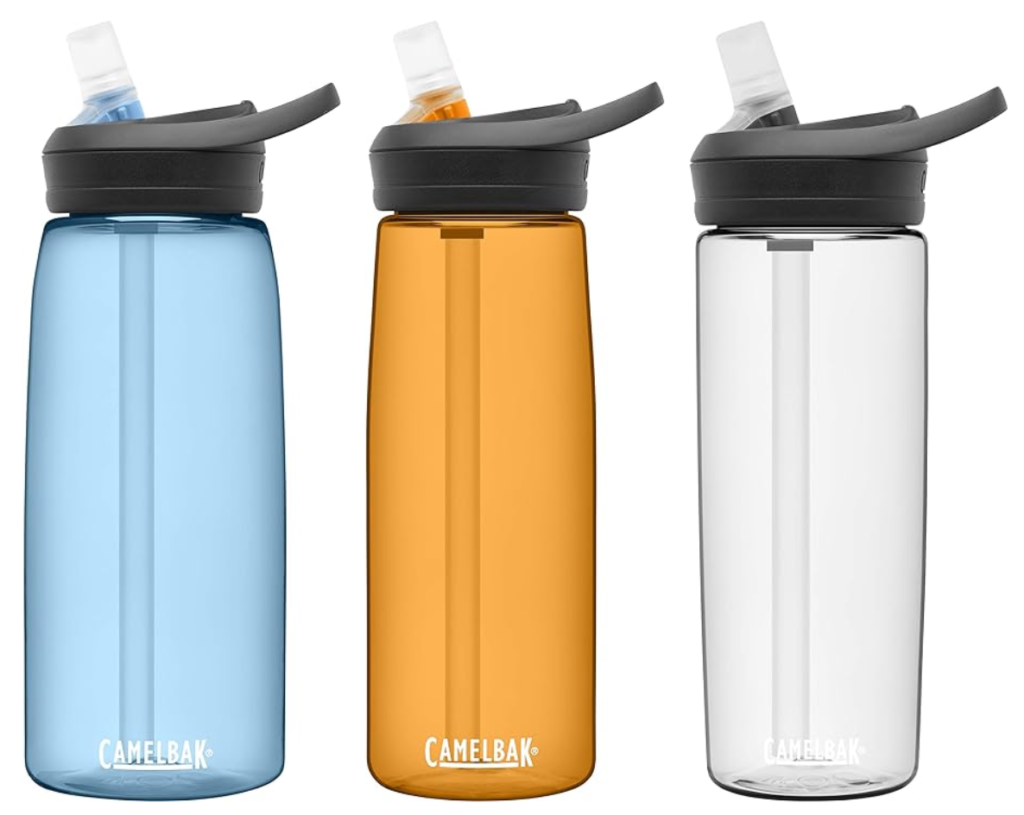
The straw makes it a little harder to clean, but it’s still simple and durable. If your preference is for a bottle with a straw, you can’t go wrong with a Camelbak.
#3 Thermos – A little more functionality, a little less durable
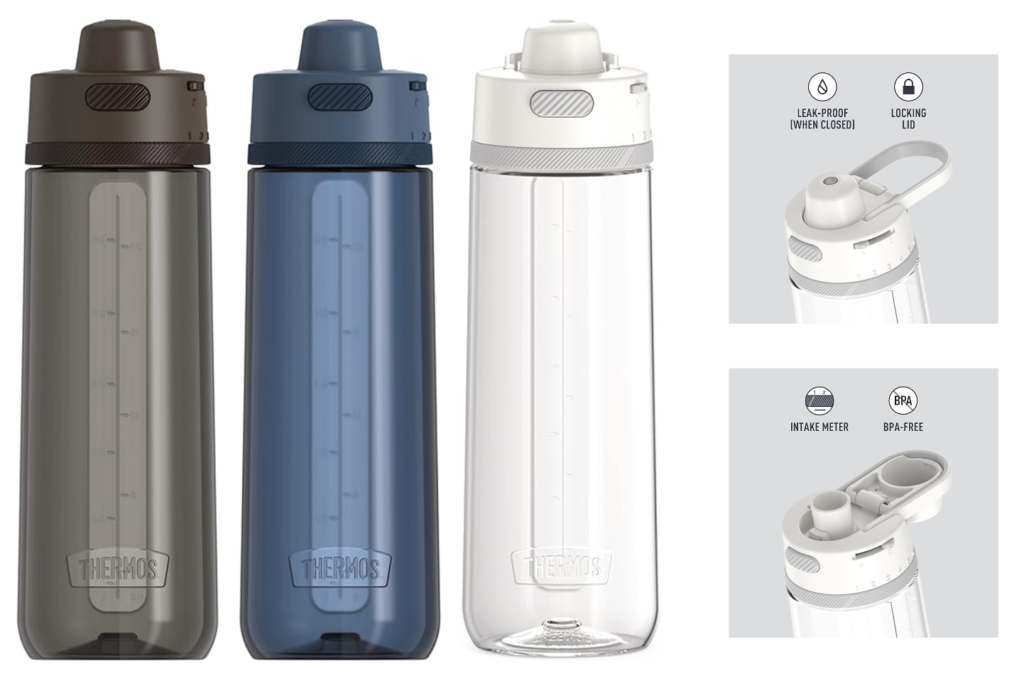
If you prefer this style of bottle, Thermos is a good brand to go with. It’s ranked #3 only because with more moving pieces, it will be more likely to break and harder to clean, which may shorten the lifespan.
Best Stainless Steel Bottles
Insulated
Hydro Flask – Best wide-mouth option
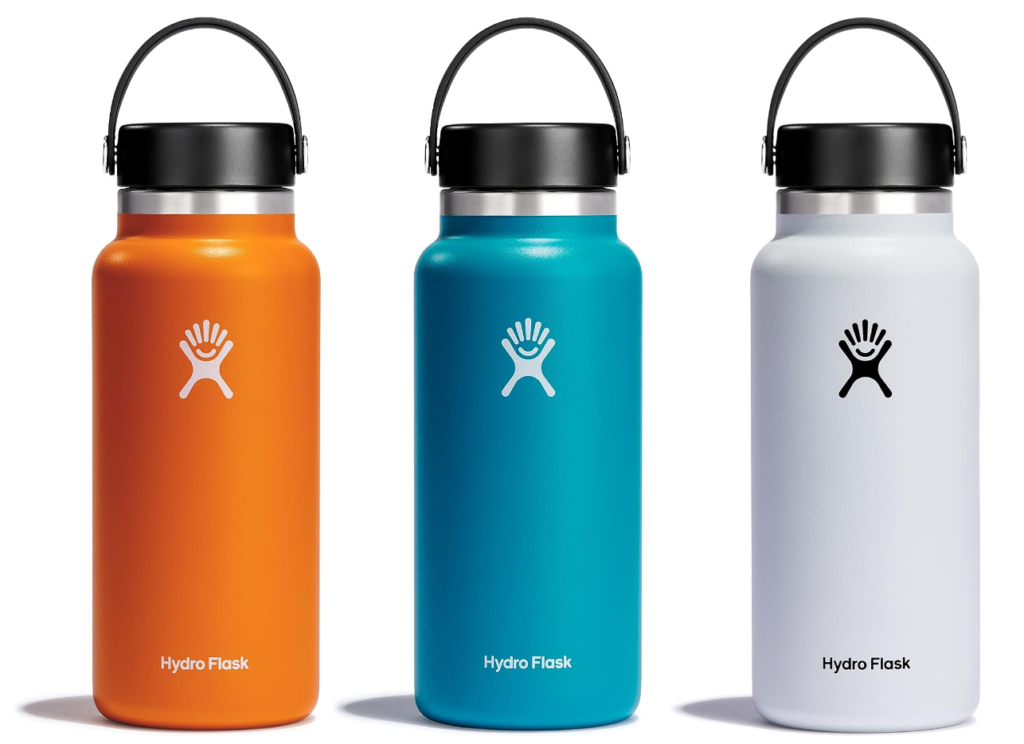
Hydro Flasks are simple, durable, and amazingly insulated. They keep cold drinks cold for 24hrs and hot drinks hot for 12hrs. I can attest to this and am continually amazed at how effective they are. Hydro Flask also offers a straw option if that’s your preference.
Camelbak – Great alternative
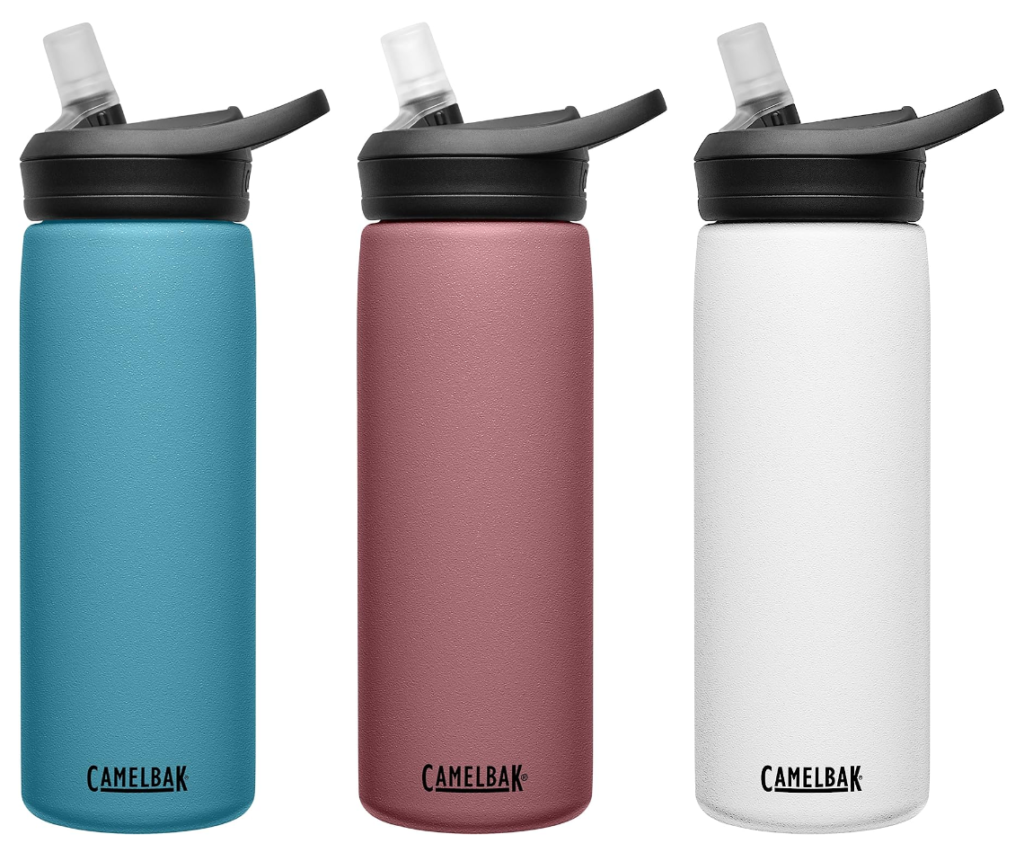
Camelbak’s bottles technically don’t insulate as well, but are still a great option. For most use cases this level of insulation should be plenty and user reviews attest to this. Check the bottle’s label to see how well they insulate:
- “10 hours cold” – refrigerated water without ice stored in the product will still be cool for approximately 10 hours
- “6 hours hot” – freshly brewed coffee or tea stored in the product will still be warm approximately 6 hours later
Non-Insulated
If you want the lowest-price and (generally) lowest carbon footprint bottle that is not plastic… a non-insulated stainless steel bottle is a good choice (see concerns about aluminum bottles below).
Insulation vs Non-Insulation?
- Weight – Non-insulated bottles are a little bit lighter but not enough to truly notice, especially when you have it filled with water the majority of the time.
- Size – They are also a little bit smaller since the walls are thinner, which may be a factor if you’re traveling, but generally not a significant concern for most people.
- Price – When it comes to price however, there is a significant difference. Insulated bottles are generally twice as much as non-insulated bottles.
- Carbon Footprint – Insulated bottles also require more materials and energy input to produce, so they have a bigger carbon footprint than non-insulated bottles.
Bambaw – Low cost option (Under $20)
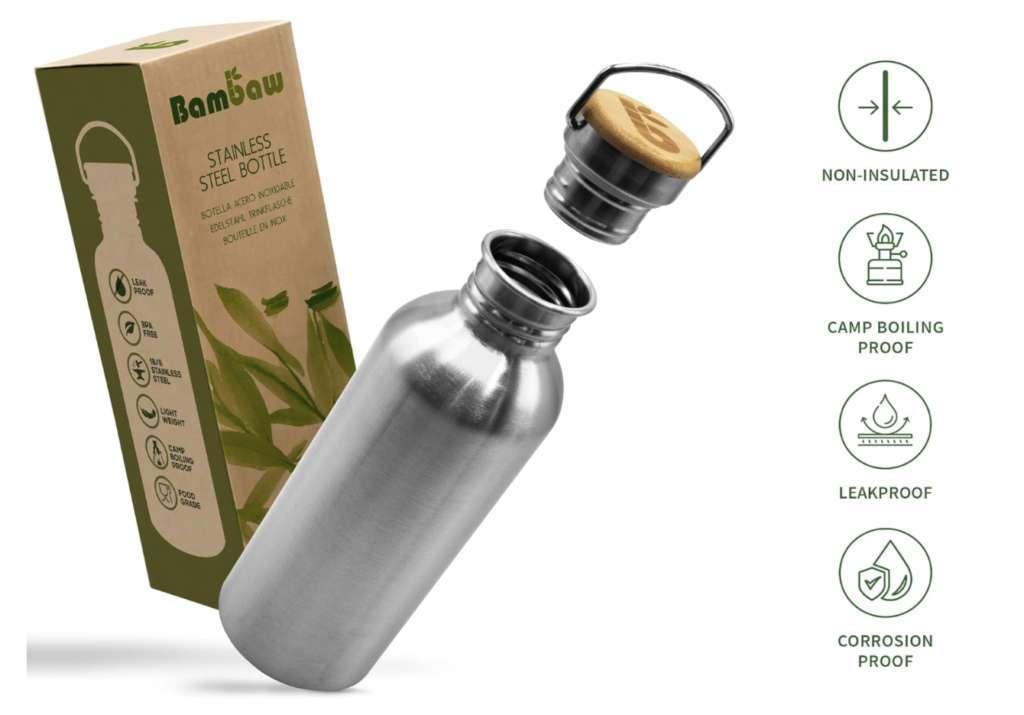
Based on their product reviews, website, and reviews on third party environmental sites, Bambaw appears to be a reputable brand. They have a mission to provide environmentally friendly and healthy products. If I was looking for a non-insulated bottle, this would likely be my selection.
Nalgene – Lifetime warranty ($32)
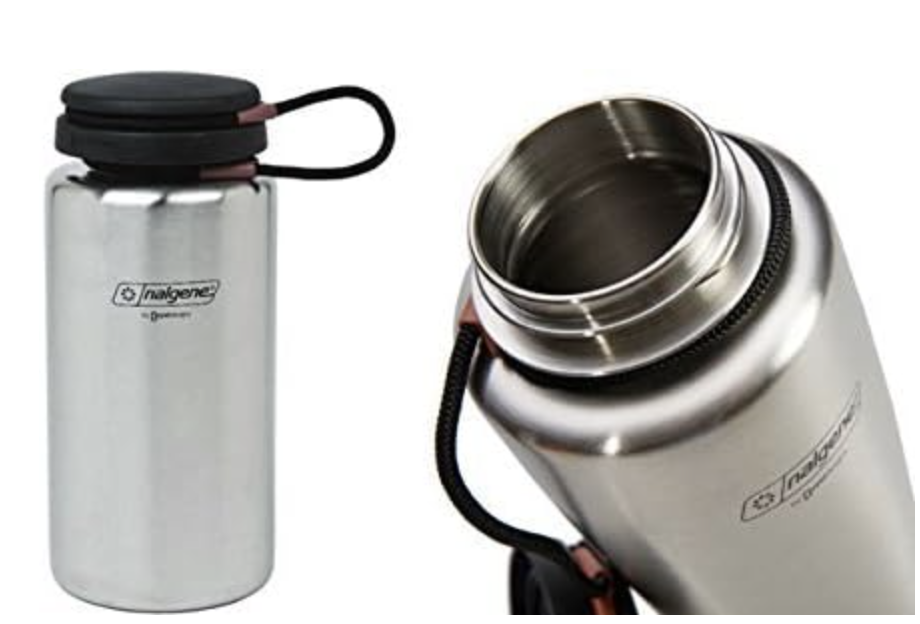
I like the Nalgene stainless steel bottle because it has a wide mouth which is easier to clean. Being from Nalgene I also expect it will be very durable and their lifetime warranty backs this up. Although it’s more expensive, it may last longer.
Aluminum Water Bottles
While aluminum water bottles check all the boxes for use-cases, there is a reason most reputable brands like Nalgene, Camelbak, and Hydro Flask don’t make them…
Aluminum bottles require a lining that is critical to prevent the metal from leaching into the water and to prevent any metallic taste. While it’s cheaper, lighter, and just as recyclable as stainless steel, the lining in aluminum bottles is often a BPA or BPS plastic which presents an avoidable health concern.
I recommend sticking with stainless steel if you’re going with a metal water bottle.
Learn More: Stainless Steel vs Aluminum Bottles
Collapsible Water Bottles
Collapsible water bottles are almost exclusively designed for hiking and backpacking. As a result of being lighter and collapsible they are also less durable. So they are not particularly well suited for everyday use.
However, if you have a unique situation that warrants a collapsible water bottle, start by checking out these top brands:
Glass Water Bottles
Glass water bottles are a great choice for home use and light commuting. Glass has a smaller environmental footprint than other bottle materials and are safer than most bottles made with plastic or plastic lining (aluminum). The only drawback is their weight and fragility, but many new models come with a protective sleeve to reduce the chance of breaking.
#1 purifyou – simple glass water bottle
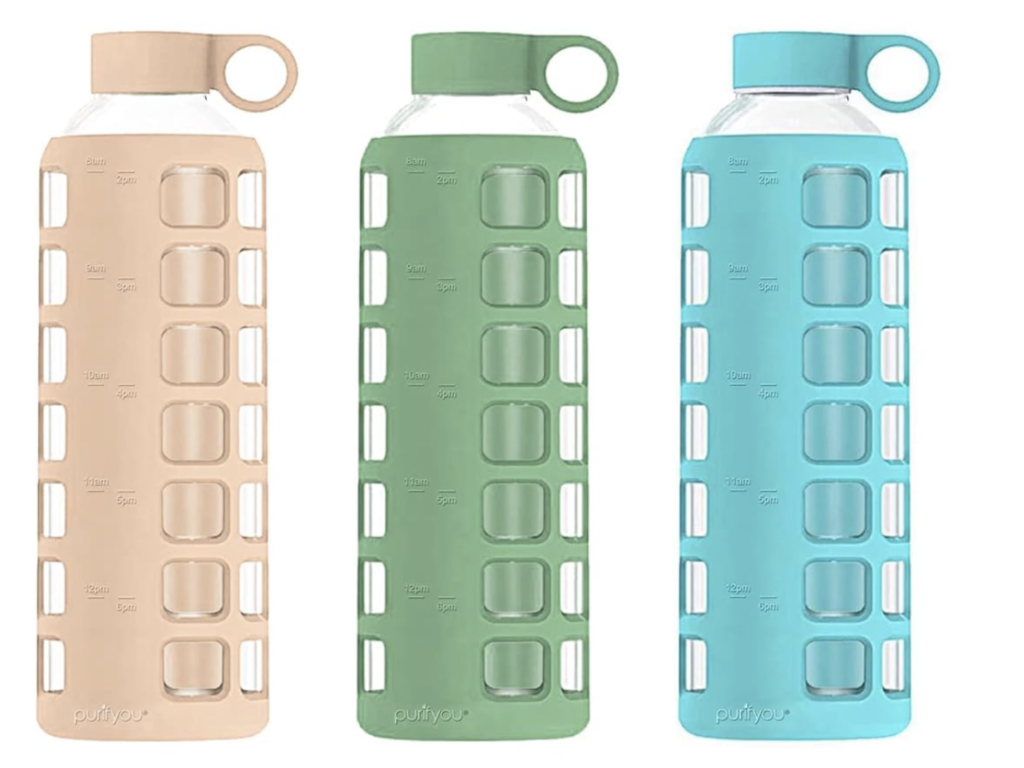
#2 Takeya – sleek design with straw
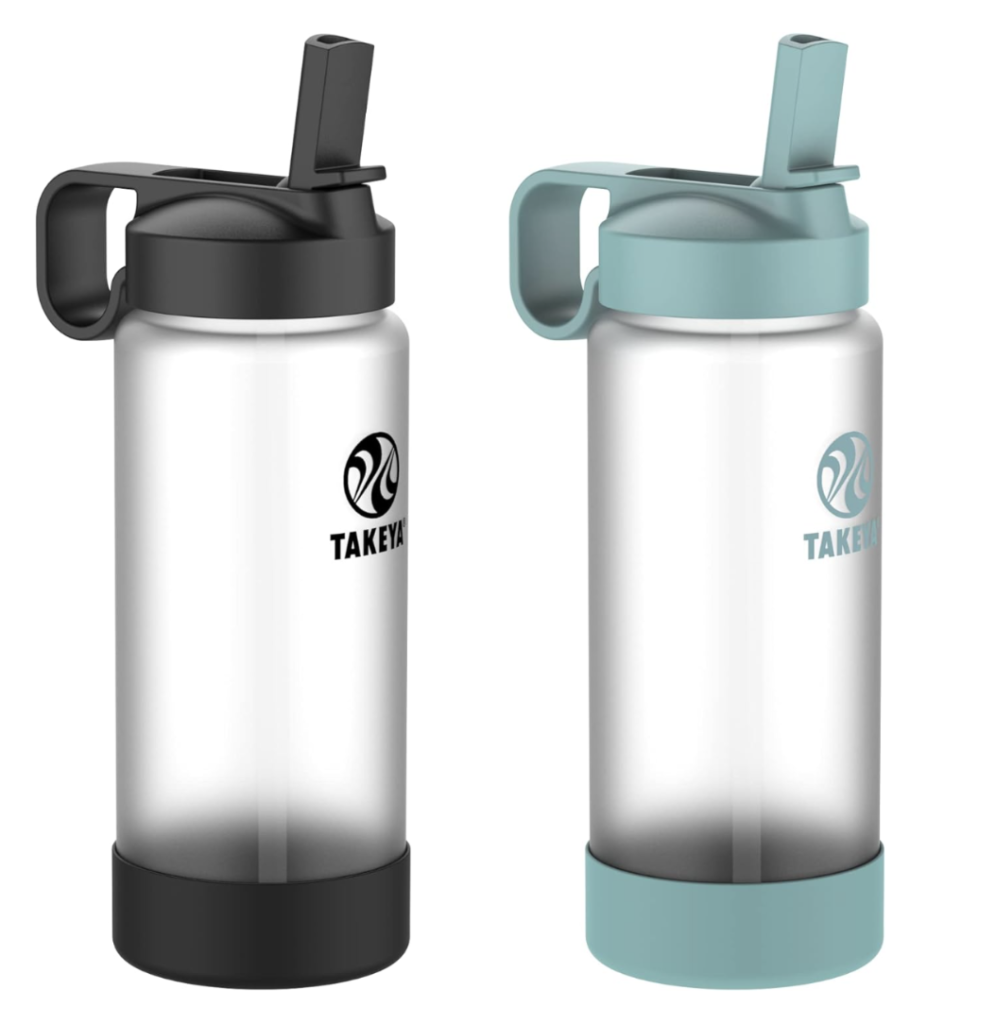
Takeya is a reputable brand, known more for their insulated stainless steel bottles. There aren’t too many options when it comes to glass water bottles with straws, but this is one of the top brands.
#3 tronco – for around the home or office
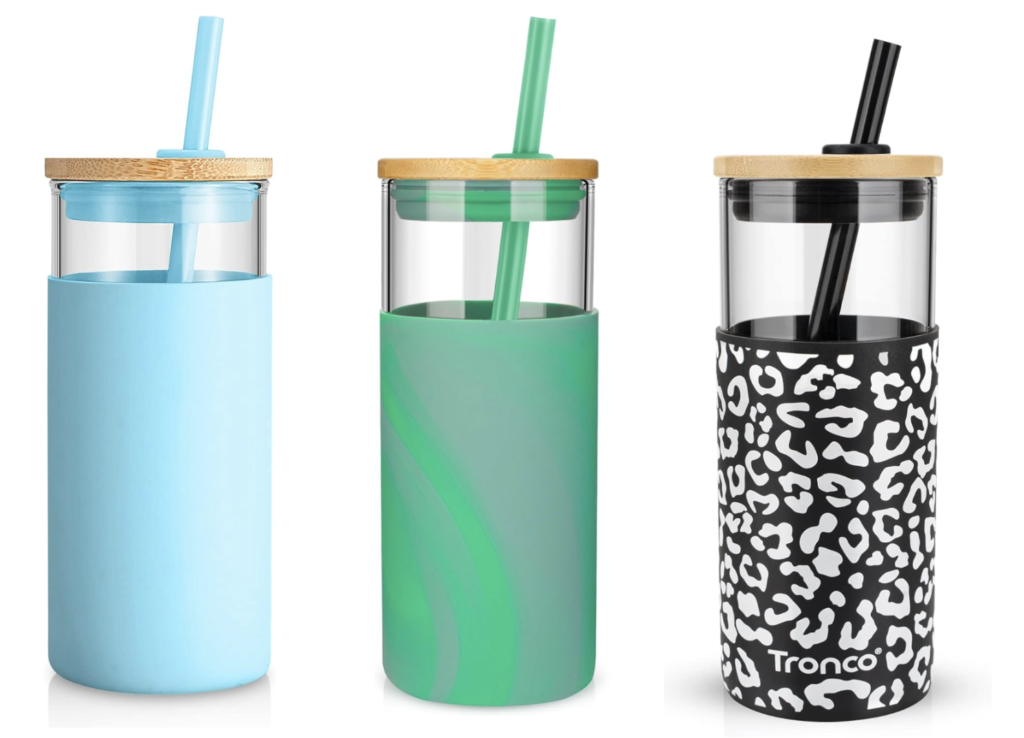
tronco bottles have a nice design that make for a great bottle for water, coffee, or tea around the house or office. The design is best suited for tables, desks, or cup holders, so it won’t be as versatile as options with tops that seal completely.
Final Recommendations
The important part about getting a bottle is using it in lieu of single-use bottles. While each type of reusable bottle is made for slightly different uses and of different materials, the main purpose remains the same. I recommend keeping these two tips in mind for your final selection:
- Functionality – choose a bottle that fits most of your needs. If possible find one bottle that covers most of your hyrdration needs.
- Likeability – get a bottle you like. Take some time to find one that you feel matches you and you’ll be happy to carry around. The more you like it the more you’ll use it.
Thank you for your interest and effort in reducing single-use plastics!
